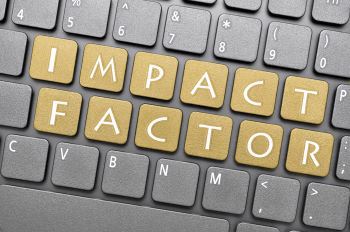
The impact factor was designed by bibliographer Eugene Garfield to create a more efficient way for scientists to find important information to their research. It was also meant as a sort of warning for journals of lesser relevance, so researchers knew what to avoid. In 1992, Thomson Reuters acquired the rights to issue impact factors, and from there the impact factor as we know it became a staple for renowned journals across the board.
At its best, this ranking system is a badge of honor, but at its worst, it can mark a journal as irrelevant. Journals that advertise their impact factors tend to be established, and if they can, these journals show two impact factor ratings: the two-year impact factor, and the five-year impact factor. But what do these numbers mean, and what is the real difference between two and five years?
Two-Year Impact Factor
As we covered in a previous blog, the standard impact factor is a calculation based on two years of a journal’s publication. Rankings are only created for journals that are covered in Web of Science, a global citation database that caters to accredited scholarly work from a vast range of publishers. Impact factors are calculated by the number of times articles were cited (including self-citing), divided by the number of articles that were published in the same years. The higher the number, the more the journal was circulated. The value of the journal tends to be directly associated with the two-year impact factor, as a journal that is well circulated is more popular.
Five-Year Impact Factor
While a standard impact factor relates to the most recent citation indices, the five-year impact factor covers a much broader range. The five-year impact factor applies to journals that have six or more years of publication. A journal with only two or three years of publications may have a five-year impact factor, but it will equal their two-year impact factor as the additional years will be counted as zero. This also goes for journals that have been around for over six years but have less than six years in the Web of Science. The formula for finding this number is the same, but doesn’t necessarily mean that the results will be the same.
Comparing the Two
Only three years separate the standard and the five-year impact factor, yet the numbers are always changing, and the difference between them can be a big indicator of how the journal is perceived in the Academic community. Sales and rotation of literature tend to spike when the work is new, and once this stage passes it begins to plateau. Academic research in particular is fast-moving, and as research grows and changes, journals can have a hard time catching up. Comparing the standard and the five-year impact factor can help you understand how the journal is staying relevant. Most of the time, a journal tends to stay in the same range between the two impact factors, but the number is rarely exactly the same. If a journal has a high impact factor but its five-year impact factor is lower, the journal could be losing its touch. Alternately, if the five-year impact factor is higher, then the journal could be learning and adapting to the growing needs of the market.
It can be difficult to compare journal impact factors, as different publishers and subject areas attract different levels of interest and citation needs with each passing year. But comparing a standard and a five-year impact factor with the same journal will help you understand how the journal is doing. Once you find a suitable journal with an acceptable impact factor, let eContent Pro help you take the next step towards publication. With our English language copy editing service, your document will be thoroughly examined for spelling, grammar, punctuation, formatting, and flow issues, to ensure that you are as prepared as possible!

